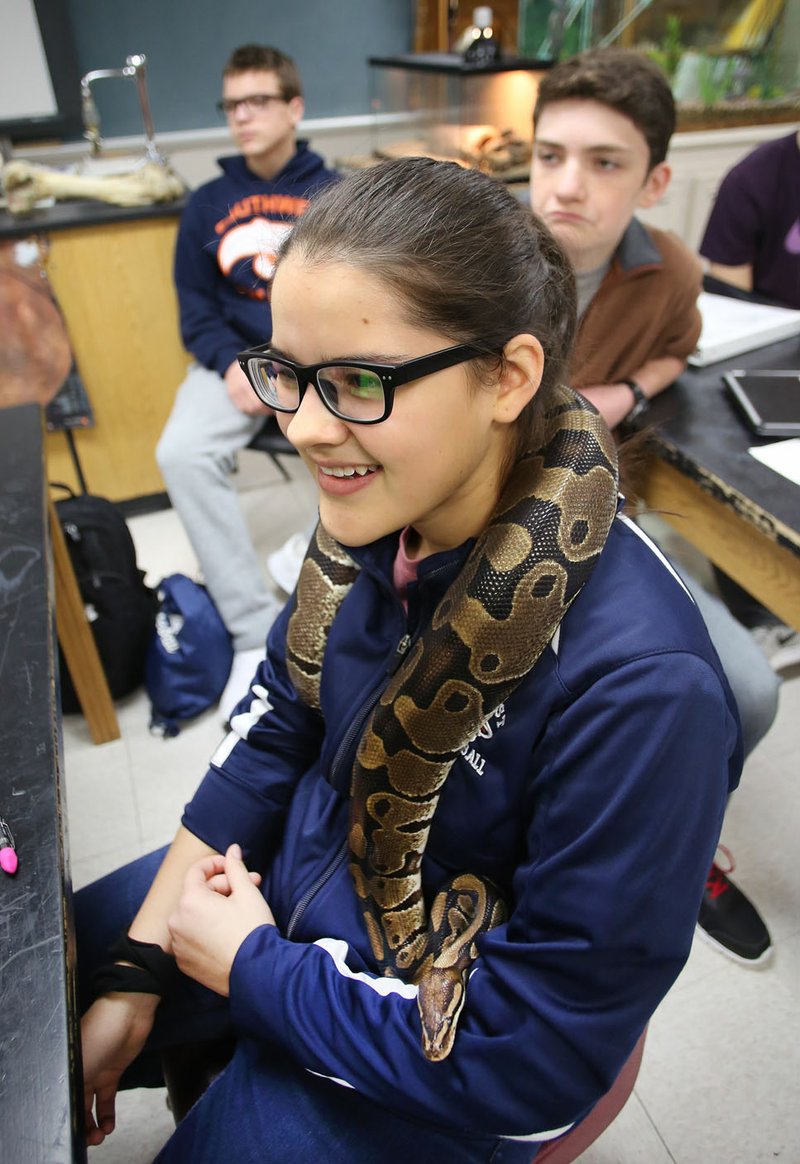SPRINGDALE -- Some of the state's top schools were excluded from $7 million the Arkansas Department of Education recently awarded to more than 150 campuses.
Central Junior High and Southwest Junior High school principals stood at the Springdale School Board meeting Tuesday with principals of the other four campuses in Springdale named to the Arkansas School Recognition Program. Unlike their peers, Central and Southwest didn't qualify for cash incentives because they continue to have a status as "needs improvement focus."
At a glance
No reward for these schools:
Ranking in the top 5 percent of schools for growth or graduation rate
• Dermott High School, Dermott School District
Ranking in top 6-10 percent for growth or graduation rate
• Beryl Henry Upper Elementary School, Hope School District
• Central Junior High School, Springdale School District
• Oark High School, Jasper School District
• Southwest Junior High School, Springdale School District
Ranking in top 6-10 percent for performance and growth
• Crestwood Elementary School, North Little Rock School District
Source: Arkansas Department of Education
"We have done everything and complied on every level with the Arkansas Department of Education with what we're supposed to do as a focus school," said Melody Morgan, director of accountability and assessment for the School District. "That label is still hanging over our head, preventing us from having equity with the financial reward system."
The annual update of the list of "needs improvement focus" and "needs improvement priority" schools is on hold during a transition in how the state evaluates schools, said Louis Ferren, systems administrator for the department's Public School Accountability division.
The state designates schools as "achieving" or "needs improvement" based on a comparison of the performance of all students with a group of students who are low-income, have disabilities and are learning English, according to the department. Schools fall into the "needs improvement" category when they do not meet annual performance goals for both groups of students.
The needs improvement category includes "priority" schools ranking in the bottom 5 percent of schools for performance and "focus" schools having had the largest gaps in performance, according to the department. These schools are in the state's improvement program.
The state education system is in flux because of state and federal changes in the past few years in testing and the requirements for how schools are evaluated.
Schools have to meet annual performance goals for two consecutive years to be cleared of a focus or priority status, Ferren said. Focus and priority schools were last determined in December 2015, he said.
State officials followed guidance from the U.S. Department of Education in pausing the annual updates of school statuses, and no new annual performance goals have been set for schools to meet in order to show improvement, Ferren said.
When the rewards for schools were announced in December, six schools with a "focus" or "priority" status were ineligible for the cash prizes under state law, Ferren said. They were the two Springdale schools, Oark High School in the Jasper School District, Beryl Henry Upper Elementary School in the Hope School District, Crestwood Elementary School in the North Little Rock School District and Dermott High School in the Dermott School District.
Rewards for the other 152 schools receiving incentive money ranged from $1,950 to $178,800, according to the department.
Central would have received $49,550 and Southwest $34,150 if the schools did not have the designation, Morgan said.
Knowing they would not receive a prize came with a brief disappointment, but that quickly shifted toward celebrating what students accomplished and knowing they beat the odds, Central Principal Paul Griep said.
Teachers and administrators at Central and Southwest have worked to build programs that give students a greater sense of belonging, to help them know where they are academically and to have a specific plan for getting to where they need to be, Griep said.
The recognition still affirms the efforts of teachers and students, Southwest Principal Shannon Tisher said.
"The daily focus is, 'How am I going to help every student that crosses my path to reach their potential?'" Tisher said. "We all know that they're capable of doing it. Sometimes they just have to believe they're capable of doing it."
Her staff is proud of ranking in the top 10 percent of schools for student gains on state tests despite being a "needs improvement focus" school, she said.
"What we're doing makes a difference, and our kids are responding," Tisher said.
Southwest has 650 students, with 70 percent from low-income families and 50 percent who are learning English. Central has 920 students, with 50 percent from low-income families and 30 percent who are learning English.
Central, Southwest and Oark High School met their performance goals last year, putting them one year away from potentially being cleared of their status.
The Springdale schools likely would have been cleared had the state continued its annual review process, Morgan said.
The Oark campus consists of 168 students in kindergarten through 12th grade, with 89 who are in the high school grades, Principal David Westenhover said. Oark High School has been a "focus" school since 2011.
Westenhover has seen student achievement on tests and graduation rates rise in the three years he has been principal, progress they celebrate, he said. Each student has an individual academic plan that includes their strengths and skills they need to grow. The daily schedule includes time for students to spend on remediation or extending their learning.
The staff uses information from last year's tests and from interim exams that project how students will perform this spring to track student progress, he said.
The school improvement status does give the campus and other focus and priority schools access to training and the ability to apply for grants that are not open to other schools across the state, he said. All schools would love to have extra money for their students, but Westenhover understands the law excludes schools like his.
"If the rules hadn't changed, we would not have been in school improvement," Westenhover said.
NW News on 01/16/2017


